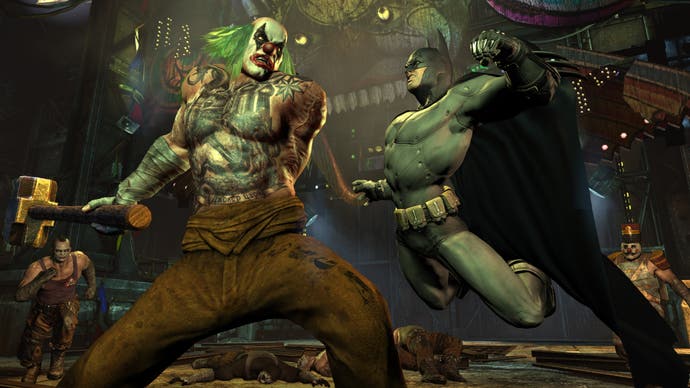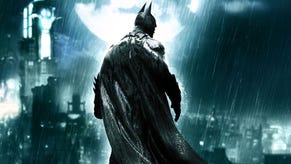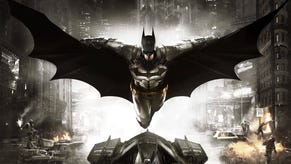Batman: Arkham City
Dark Knight, Big City.
Are the ears slightly longer? I think the ears might be slightly longer. The cape's definitely the same - still stylishly handy for stunning foes or sweeping across the night sky - and the hulking Bat-armour has that familiar metallic sheen. But the ears look... Different? Maybe? Now I'm not sure...
The problem with Batman: Arkham Asylum is that it didn't really have that many problems. Rather that tethering its ambitions to a specific license - a film or a single comic book interpretation - Rocksteady focused in on the iconic character at the heart of the franchise.
When that character spoke, the game built itself outwards into a brilliant package that seemed deftly considered and strangely effortless. Batman's mortal, which means he's unbeatable against unarmed crowds and useless against gunfire.
That gave the design team the perfect means of balancing the mixture of stealth and brawling elements, while the decision to limit the scope to one famous island location and a single night's adventure made for a wonderfully atmospheric experience. Having one of pop culture's greatest villains forever taunting from the sidelines was the final, seemingly unrepeatable, touch.
So how do you build upon that? How do you follow up on Arkham Asylum? Opt for massive changes that risk alienating the fans, or implement incremental tweaks that leave your audience, well, wondering whether the ears are slightly longer?
The answer lies in the middle-ground. Building on the core strengths of the first game, Rocksteady has feathered on new animations, combat moves, side offerings and traversal options.

But it's also made a single large shift in focus right at the centre of the project, ditching Arkham Island and letting you loose in a fenced-off section of Gotham itself. It's a move that's taken Batman away from the crags and corridors and creaky manors and dumped him into a huge outdoors world of skyscraper canyons, blinking neon, and rusting gantrywork.
Meanwhile, the silhouette of funny books' greatest metropolis rises smokily in the near distance, its towers lanced by dozens of sweeping searchlights.
This is Arkham City - a merging of the Arkham Asylum and Blackgate Prison populations brought about by the shifty Warden Quincy Sharp. In the 18 months since the first game, he has become Mayor Quincy Sharp.
It's a rotting urban mass of gang warfare, watchtowers and barbed-wire fencing. Here master criminals fight for dominance and a dying Joker still has one final, nasty trick to play on his arch rival.

Best of all, this environment provides the perfect way for Rocksteady to protect the central elements of its series while turning the overarching concept on its head. A cityscape five times the size of the original game and largely open to the sky shuffles hand-holding and interior set-pieces down into the pack, allowing traversal and exploration to rise to the top.
That means Bats needs new ways to get around. Starting on a rooftop, he can now glide for what seems like forever - a treat that was severely limited within the confines of the first outing.
He can even go into a sharp dive and then tilt upwards to gather speed and height in a manner strangely reminiscent of Super Mario World, before dropping down onto a passing victim.
Elsewhere, a new grapple move allows him to fire off a zipline which will take him from the ground and boost him right up into the sky. His cape will keep him aloft, all the better for silently exploring an environment that's bristling with violent promise.
The Riddler's trophies have been reworked for the larger setting too - they're now generally tucked inside bear traps, or tacked to the underside of a ledge so that locating them is only half the battle.









